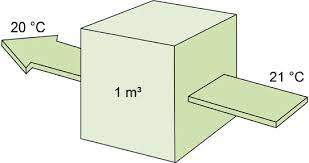Thermal conductivity
Thermal conductivity is a physical property of a material that indicates its ability to transfer heat. It is the rate at which heat is transferred through a material in response to a temperature gradient, i.e. the temperature difference between two points. It is expressed in units of W/m·K (watts per meter per kelvin) or other equivalent units.

Materials with high thermal conductivity can transfer heat quickly and are considered good conductors of heat. Conversely, materials with low thermal conductivity transfer heat more slowly and are considered thermal insulators.
The importance of thermal conductivity lies in the fact that it affects the thermal properties of materials and structures. When building and designing structures, thermal conductivity is a key factor in determining the thermal resistance (R value) of insulating materials and in preventing heat loss. Materials with high thermal conductivity can lead to higher heat losses and increased energy costs for heating and cooling.
Some examples of materials with high thermal conductivity include metals such as aluminum and copper, which are good conductors of heat. Conversely, glass fibers, mineral wool, expanded polystyrene and other thermal insulation materials have low thermal conductivity and are often used to improve the thermal insulation of buildings and structures.
